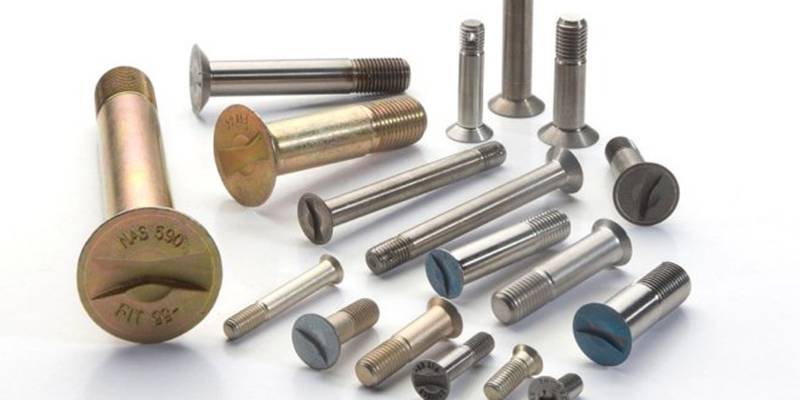- September 20, 2022
Aerospace fasteners are arguably one of the most underappreciated components in the aviation industry. They may not be in limelight but they play a vital role in keeping an aircraft in the air.
An interesting tidbit to emphasize this point: an airplane has approximately 1 million aircraft fasteners!
Now that we know how significant they are, we can appreciate this discussion about fasteners even more. In this article, we will go through various types of aviation fasteners and their requirements.
What are Aerospace Fasteners?
Aerospace fasteners serve the important purpose of keeping various aircraft body components attached together. Their role is crucial not only for performance but also for passenger safety. Think about the devastating outcome if one of the engines falls off or a door opens mid-flight –neglect is not an affordable luxury for aerospace engineers, even with fasteners!
The aerospace industry covers a wide range of products like commercial aircraft, military aircraft, spacecraft, and even missile technologies. Consequently, the topic of aircraft fasteners spans this whole gamut of applications.
Also, they need to be specially engineered for the intense and versatile environments they operate in and are quite different from the regular fasteners we generally know of. We will discuss all of these points in detail now.
Desired Qualities in Aircraft Fasteners
As highlighted above, aerospace fasteners must have elite physical qualities. The main requirements are:
High Strength
Aircraft are exposed to immense pressures and stresses during service. Fasteners need to have high tensile and shear strength to withstand such loads. Moreover, since dynamic loads like turbulence are common, good fatigue strength is also an important requirement.
Thermal Resistance
Spacecraft and military airplanes face extreme temperatures which can cause thermal failure. Fasteners must be capable of maintaining their performance in such conditions.
Corrosion Resistance
A general requirement for aircraft operating in moist environments is most often the case.
Lightweight
As mentioned above, an average aircraft can have more than a million fasteners. While a single fastener may not seem that heavy, a million of these certainly weigh a lot. Hence, lightweight fasteners are very important for aircraft performance and efficiency.
Common Standards for Aerospace Fastener
Standardization efforts in the aircraft fasteners industry date back to the times of WWII, when many such developments in the aviation industry began.
Some of the well-known industrial standards are briefly highlighted below.
SAE AS9100 is one of the earliest family of standards in the aviation industry. It deals with the design, development, production, installation, and servicing of aviation components, including fasteners.
ISO/TC 20/SC 4 is a technical committee by the ISO that specifically deals with aerospace fastener systems. Its standards include detailed information on fastener designs and materials.
General Purpose Aerospace Fasteners
Some aircraft fasteners types work in the same way as the general purpose fasteners we use in our daily lives. We will touch upon them before moving on to special fasteners specific to the aerospace industry.
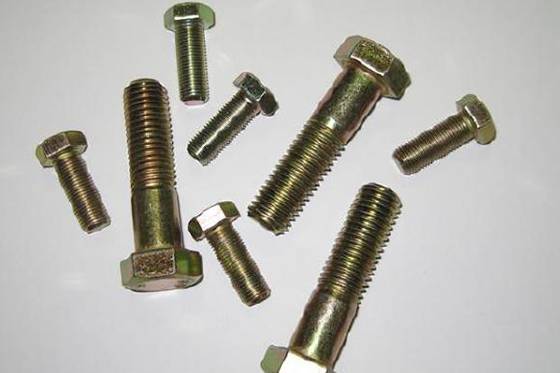
Aircraft Bolts
Aircraft bolts are externally threaded fasteners used for non-permanent joints. They provide excellent fastening strength and resistance against dynamic loading. In the aerospace industry, they are generally made from high-strength steel or aluminum alloys coated with corrosion-resistant materials.
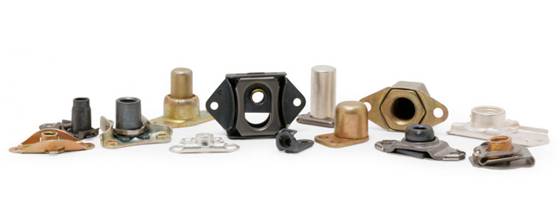
Aircraft Nuts
Aircraft nuts are the female mating parts for bolts or screws. Thus, they have internal threads. Their material properties need to be at par with their mating components.
Furthermore, they also include features such as self-locking and sealing that are integral for aerospace structures that experience a lot of vibrations mid-flight.
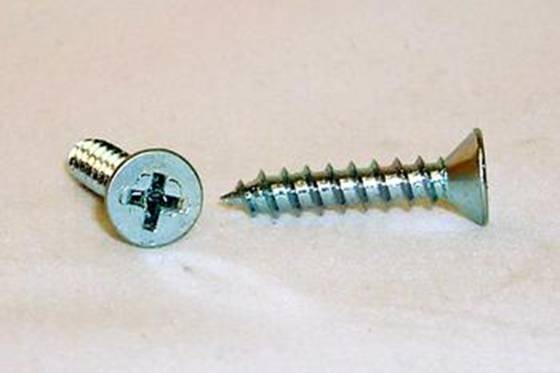
Aircraft Screws
Screws are the most abundant fasteners in aerospace structures. They also have external threads like bolts but the threads are pointier with a ridge-like shape and a higher helix. Several categories of screws are used in aircraft assembly, with different materials, coatings, screw heads, and designs.
Structural screws have similar tensile and shear strength as bolts and are ideal for heavy-duty applications.
Machine screws are also useful in aircraft assembly. They come in various head designs like roundheads, truss heads, countersunk, etc.
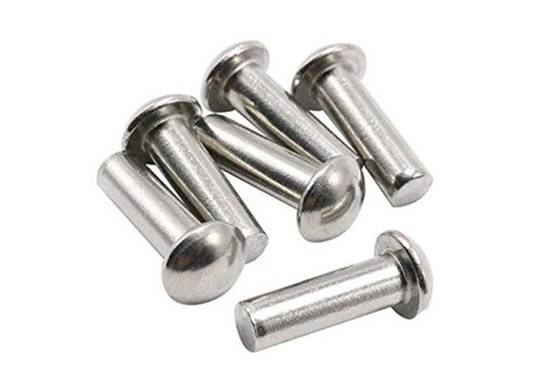
Aircraft Rivets
Aircraft rivets are pin-like structures that are plastically deformed from one end to create a permanent joint. They are most commonly used in joining the metal sheets that make up an aircraft’s body. They provide a strong grip and are a relatively cheap option among aerospace fasteners.
Special Aerospace Fasteners & Their Applications
Aircraft fasteners have highly specialized applications and standard designs do not cut it in many cases. Thus, engineers have come up with various innovative designs to deal with such applications.
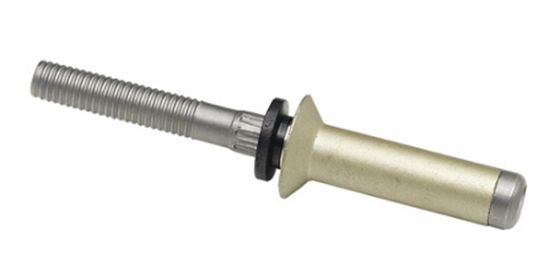
Blind Bolts/Rivets
Blind bolts and blind rivets are incredibly useful when one side of the joint is inaccessible. Thus, in aircraft, they are commonly found in hard-to-reach places. Also, this is the reason for the ‘blind’ in their name.
The fastener is inserted into the hole and tightened. In the case of blind rivets, the rivet’s head plastically deforms to provide a sturdy hold. Blind bolts are tightened into a pre-positioned collar which expands inside the hole and locks the assembly into position. Blind fasteners offer excellent strength and vibration resistance.
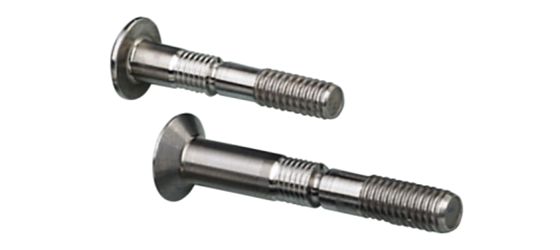
Lockbolts
Lockbolts, or huck bolts as they are called sometimes, are a unique hybrid between bolts and rivets. They come as two-part assemblies, one of which is quite similar to a normal bolt. On the other end, special collars are used that either swage into the grooves of the lockbolt’s pin shank or are tightened onto its threads to form the joint.
In some cases, a weaker section is machined into the pin and the extra, protruding part of the shank is removed post-assembly.
Lockbolts are easy to install and provide good fastening strength. Therefore, they are a more lightweight alternative to other common aerospace fasteners. Also, they are used in the assembly of structural components in landing gears, wing splice fittings, etc.
Hi-Lok Pins
Hi-Lok pins are two-part fasteners composed of a threaded pin and collar. Its special feature is its ability to maintain a constant preload, which is achieved as part of the pin detaches at a certain preload value.
The uniform preload makes it reliable and allows for relaxed quality checking. Additionally, they have good strength and fatigue life.
Turnlock
Turnlocks are innovative aircraft fasteners that provide a non-permanent joint. They are mostly used in securing doors, electric panels, and other similar components in aircraft bodies.
The real advantage they offer is the quick and easy removal of the assembled components, which is simply achieved by loosening its screw.
Adhesive Fasteners
These are unconventional fasteners that do not require a hole. Instead, they stick to surfaces with the help of high-performance aerospace adhesives and have anchors/hooks to fasten components together.
They are not as strong as the mechanical fasteners discussed above but do the job for low-intensity joints. Some of their common applications include wire management and joining sheet panels.
Available Materials for Aerospace Fasteners
Aerospace fasteners have to bear intense operating environments and they should be capable of maintaining their performance throughout their service life. We discussed the desired physical qualities of aviation fasteners.
Now, we take a look at the materials that are popular for manufacturing them.
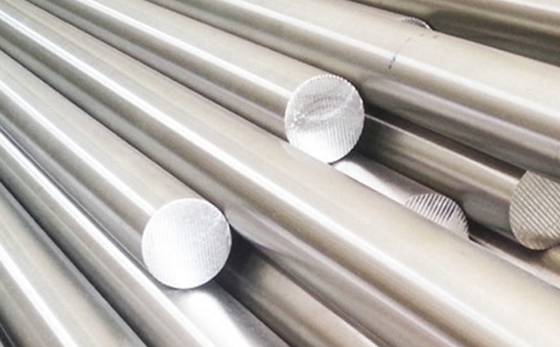
Aluminum
It is a classic aerospace material owing to its qualities of being a lightweight, good strength-to-weight ratio, and corrosion resistance.
Aluminum alloys are often augmented with heat treatments and coatings. For example, the T6-AI70xx series is commonly known as ‘space-grade in most industries owing to its composition and heat treatment. Aircraft bodies are commonly made from aluminum alloys.
Steel
Various grades of steel are widely used to manufacture fasteners. They provide great strength and durability to joints.
However, steel material is generally heavier than its counterparts such as aluminum and titanium, and it requires certain treatments to make it resistant to heat and corrosion.
Still, it is certainly a popular material group when it comes to aircraft fasteners.
Titanium
Titanium alloys are stronger than steel but much lighter. They possess good thermal stability and corrosion resistance as well.
These properties make it an ideal choice for fasteners. However, the only reason inhibiting their popular utilization is their high price. For this reason, they are only an occasional replacement for aluminum and steel fasteners for special applications.
Special Alloys
The aerospace industry is widely regarded as one of the most innovative in terms of product development. This repute is partly owed to its major contributions to enhancing material sciences.
Numerous special alloys are out there that outperform the materials discussed above. They have higher strength, less weight, better thermal stability, and more longevity.
Some common special alloying metals for aerospace fasteners include nickel and chromium. Inconel, NIMONIC, Waspaloy, Hastelloy, etc. are some of the major special alloys in use currently.
Aerospace Fasteners vs Commercial Grade Fasteners
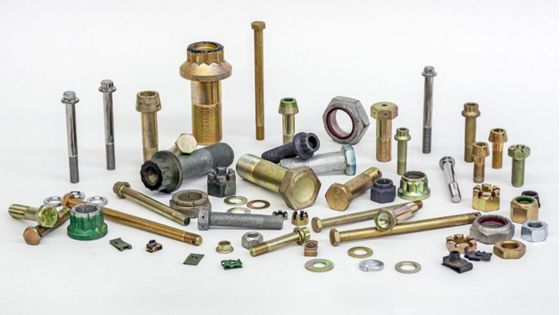
Aerospace fasteners may look similar to commercial-grade fasteners but are way superior in terms of performance characteristics. An airplane with commercial fasteners will probably not last more than a minute in the air.
Enlisted below are the main differences between both types of fasteners.
Material: Fasteners used in the aerospace industry are made with high-quality steel while commercial grade fasteners are commonly manufactured from low-to-medium carbon steel.
Strength: Fasteners in aircraft are heat treated and have tensile strength above 800 MPa. In comparison, commercial fasteners are typically below 400 MPa.
Material Properties: Fasteners in aircraft undergo special treatments to be more heat resistant, corrosion resistant, and prone to vibrations.
Self-Locking: Since aircraft are subject to strong vibrations, there is a risk of fasteners loosening. To tackle this, most aircraft nuts and bolts have a self-locking mechanism. Commercial grade fasteners are typically non-self-locking on the other hand.
Cost: Owing to additional functionality, aerospace fasteners understandably cost more than commercial fasteners.
WayKen Offers Precision Macining Services for Your Fasteners
Are you looking for high-quality aircraft fasteners for your projects? WayKen is a manufacturer that specializes in precision machining services for types of aircraft fasteners.
With a team of experts and rich machining experience, our manufacturing standard can meet our customers’ needs for aerospace fasteners and various precision machined parts. Contact us for an instant quote today and get DfM feedback, you will get one-by-one support and a competitive price.
Conclusion
Aerospace fasteners are an essential part of any aircraft. They hold the various parts of the aircraft together and allow it to function properly. There are many different types of fasteners used in aircraft construction, and each has its own specific purpose. We hope this was an informative read and that it cleared your questions for aircraft fasteners.
FAQ
What materials are fastener covers made of?
Covers must properly shield fasteners from their extreme operating environments. Thus, they are made from materials like black oxide, cadmium, zinc, nickel, and phosphate.
What are the optional surface finishes for aircraft fasteners?
Fasteners can be coated to achieve numerous properties. There are optional surface finishes and coatings for qualities like anodizing,, painting, and plating, which can improve corrosion resistance, high temperature resistance, wet sealing, and aesthetics.
What hole fit tolerances are appropriate for aerospace fasteners?
The tolerance range of the hole is dependent upon many factors such as the type of fastener, its material, joint material, working conditions, surface coating, etc. Typically, clearance fits are used for rivets while bolted joints have a tighter, transition fit.

